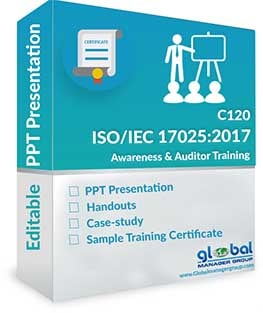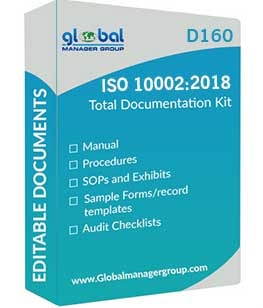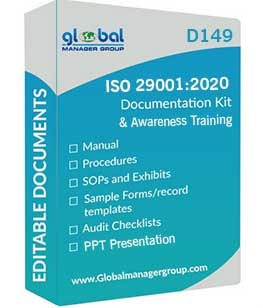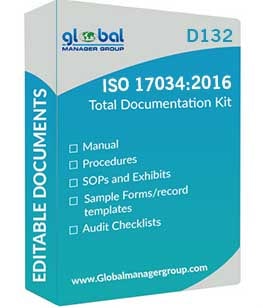ISO 15189 Accreditation: Documentation, Benefits, and Technical Requirements

Strong 8k brings an ultra-HD IPTV experience to your living room and your pocket.
ISO 15189 accreditation is an internationally recognized standard designed for medical laboratories. It sets the framework for laboratories to meet the necessary requirements for quality, competence, and reliability in medical testing. This guide explores the critical documents required for ISO 15189, the technical requirements for successful implementation, and the wide range of benefits this accreditation brings to healthcare providers, patients, and medical laboratories.
What is ISO 15189 Accreditation?
ISO 15189 outlines the quality management system (QMS) requirements specific to medical laboratories. Accreditation ensures that the laboratory’s operations are efficient, that testing processes are conducted following best practices, and that results are consistently accurate and reliable. ISO 15189 is a critical tool in promoting public health, as it ensures that laboratories meet international standards of quality, safety, and competence.
By adhering to ISO 15189, laboratories can demonstrate their ability to produce reliable and trustworthy results, essential for proper patient diagnosis and care.
Key Documents for ISO 15189 Accreditation
ISO 15189 accreditation demands a variety of documentation that serves to ensure laboratories are operating to the highest standards. These key documents include:
Quality Manual
The quality manual is the cornerstone document of the laboratory’s QMS. It outlines the laboratory’s policies, procedures, and organizational structure to maintain quality. This document also specifies how the laboratory meets ISO 15189 requirements and details the laboratory’s key objectives, including maintaining high standards of testing and patient care.
Standard Operating Procedures (SOPs)
SOPs are crucial for ensuring consistent and accurate laboratory operations. They provide detailed instructions on everything from sample collection to reporting results. SOPs minimize errors and ensure uniformity across all laboratory activities, promoting accuracy and reliability in testing processes.
Internal Audit Reports
Internal audits are essential for evaluating the laboratory’s adherence to ISO 15189 and identifying areas for improvement. Audit reports document the findings, highlight any discrepancies, and outline corrective actions. These reports are key to demonstrating that the laboratory is committed to continual improvement and maintaining accreditation.
Calibration and Maintenance Records
Laboratories must ensure that their equipment is regularly calibrated and maintained to provide accurate results. This includes keeping calibration certificates, maintenance logs, and validation reports for all equipment used in the laboratory. These records are crucial for verifying the accuracy and precision of test results.
Competency Records
Demonstrating the competence of laboratory staff is an essential part of ISO 15189. Competency records include evidence of training, qualifications, and ongoing evaluations to ensure that personnel have the necessary skills and knowledge to perform their tasks accurately and safely.
Risk Management Documents
Laboratories are required to identify and assess risks related to laboratory processes. Risk management documents, including risk assessments and mitigation strategies, help ensure that potential hazards are identified, managed, and minimized to protect both staff and patients.
Validation and Verification Records
Laboratories must validate and verify their testing methods to ensure they provide accurate and reproducible results. Validation records, method comparisons, and proficiency testing results serve as proof that the laboratory's testing methods are reliable and scientifically sound.
Technical Requirements for ISO 15189 Implementation
To achieve ISO 15189 accreditation, laboratories must also fulfill specific technical requirements, such as:
Appointing a Quality Manager and Technical Manager
A Quality Manager must be nominated to oversee the establishment, implementation, and monitoring of management requirements. A Technical Manager is also required to supervise and monitor technical aspects of laboratory operations, ensuring that all testing processes meet the standard's requirements.
Defining Test Parameters
Laboratories must define test parameters, such as the range of detection, limits of detection, and uncertainty measurements (e.g., % C.V. or MU). Clear definitions ensure that testing methods are precise and consistent, leading to accurate and reliable results.
Establishing Quality Assurance and Examination Procedures
It is essential for laboratories to establish comprehensive quality assurance procedures and examination protocols. These procedures should cover all aspects of laboratory operations, from sample handling to final result reporting, ensuring that all steps meet established quality standards.
Benefits of ISO 15189 Accreditation
For Healthcare Regulators:
Provides an independent and trusted assurance of laboratory quality and safety.
Supports systematic tracking of quality improvements over time.
Encourages consistency in the quality of care across different laboratories.
Fosters innovation and adoption of the latest best practices in laboratory operations.
For Patients:
Ensures consistency in the quality of laboratory services, contributing to reliable diagnoses and treatment plans.
Guarantees the use of up-to-date technologies, ensuring that procedures and techniques reflect current best practices in medical testing.
Ensures that laboratory staff are well-trained and competent to perform their duties accurately.
For Medical Laboratories:
Offers valuable external perspectives on laboratory practices, promoting continuous improvement.
Reduces the duplication of information and performance evaluations typically required by multiple regulatory bodies.
Promotes the sharing of best practices within the laboratory network.
Minimizes operational risks and ensures the laboratory’s reputation for quality, leading to international recognition.
Steps to Achieve ISO 15189 Accreditation
Achieving ISO 15189 accreditation requires a systematic approach, consisting of several stages:
Preparation: Laboratories must familiarize themselves with the standard and ensure that their existing procedures align with its requirements.
Documentation: Develop the necessary documents, including the quality manual, SOPs, and risk assessments.
Implementation: Once the documentation is complete, the laboratory must implement the processes, train staff, and ensure that everyone is prepared to comply with the new procedures.
Internal Audits: Conduct regular internal audits to assess compliance and identify areas for improvement.
External Assessment: An independent certification body will evaluate the laboratory’s adherence to ISO 15189 standards.
Certification: After successful assessment, the laboratory will receive ISO 15189 accreditation.
Conclusion
ISO 15189 accreditation provides medical laboratories with a comprehensive framework to ensure consistent quality and competence in their operations. By maintaining critical documentation, addressing technical requirements, and continuously improving through audits and external assessments, laboratories can achieve international recognition and ensure the highest standards of care. This accreditation not only benefits regulators and laboratories but also plays a key role in enhancing patient care through reliable and accurate medical testing. For more details please check out https://www.globalmanagergroup.com/Products/medical-laboratory-15189-certification-documents.htm/
Note: IndiBlogHub features both user-submitted and editorial content. We do not verify third-party contributions. Read our Disclaimer and Privacy Policyfor details.







